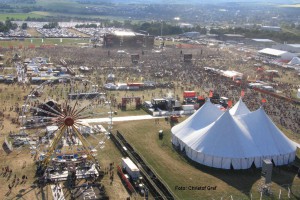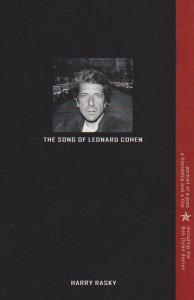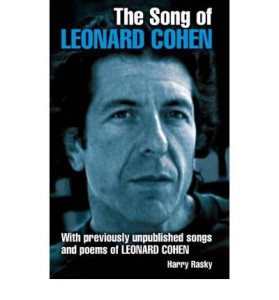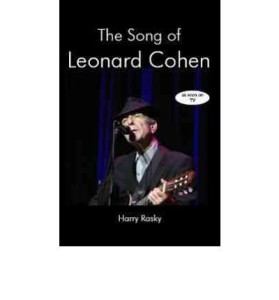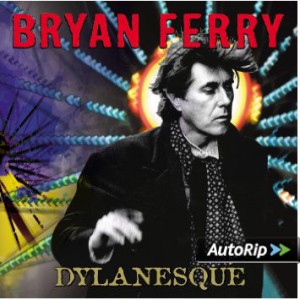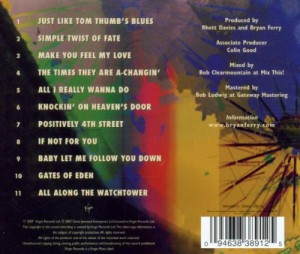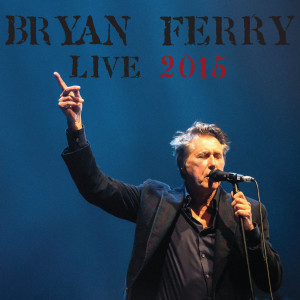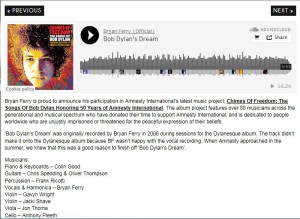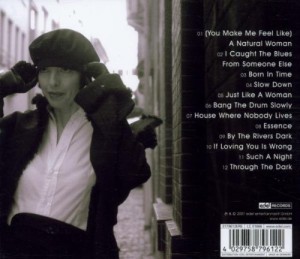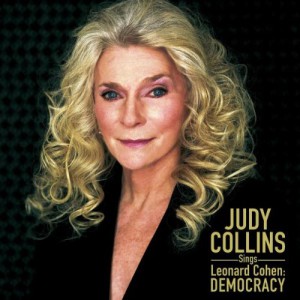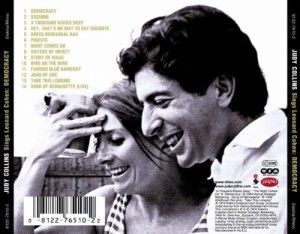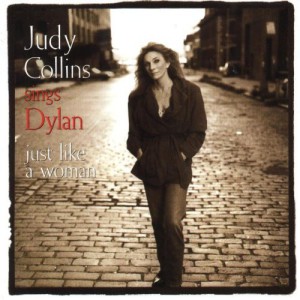Cohen & Dylan
Since the recent release of Bob Dylan’s (nee Robert Zimmerman) The Basement Tapes Complete, and Leonard Cohen’s 80th birthday, I’ve been contemplating two of the greatest musical icons and poets laureate of rock music in the sixties and onward and how their music emerges from their Jewishness.
The title track of Dylan’s 1965 album, Highway 61 Revisited, begins provocatively with a partial retelling of the opening lines in the binding of Isaac narrative (akedah) that originally appear in Genesis 22. The first stanza reads as follows: “Oh, God said to Abraham, ‘Kill me a son’/ Abe said, ‘Man, you must be puttin’ me on’/ God said, ‘No’ Abe say, ‘What?’/ God say, ‘You can do what you want, Abe, but/ The next time you see me comin’, you better run/ Well, Abe said, ‘Where d’you want this killin’ done?’ God said, ‘Out on Highway 61.’” A few years later, Leonard Cohen released his own version of that same biblical narrative in “The Story of Isaac.” Part of its message was a protest against the older generation’s decisions to send their children to war. Consider Cohen’s rebuke: “You who build these altars now/ to sacrifice these children/ you must not do it anymore/ A scheme is not a vision/ and you never have been tempted/ by a demon or a god/ You who stand above them now/ your hatchets blunt and bloody/ you were not there before/ When I lay upon a mountain/ and my father’s hand was trembling/ with the beauty of the world.”
The akedah’s theme of trial, sacrifice, martyrdom and death of the beloved son which so critically informs and shapes subsequent Jewish, as well as Christian, theology seeps its way into modern popular music. These songs cannot possibly be understood without first understanding their rootedness in a long Jewish tradition engaging the significance of music, and second, without a close look at their direct referent – one of the most powerful and shocking passages in the Hebrew Bible.
The very name “Israel” midrashically compounds the words song (shir) and God (el) which captures both the metaphysical bond between God and music, as well as the physical uniqueness of Israel as the national reflection of this integral bond. Moses Nahmanides considers the song at the end of Deuteronomy a précis of the entire Jewish historical experience –“Now this song, which is our true and faithful testimony, tells us clearly all that will happen to us.” Jewish experience and chronology is a divine musical score. Thus by renaming Jacob Israel, the angel he struggled with introduces music into his existence. It is no coincidence that immediately afterward, if only for a fleeting moment, Jacob reunites with Esau, his estranged brother, in a genuine mutual expression of love.
The formal mitzvah that obligates Jews individually to write a Torah scroll is derived from a particular divine mandate addressed to Moses and Joshua to inscribe one small segment of the Torah, the Song of Moses – “And now write you this song and teach it to the Israelites” (Deuteronomy 31:19). The rabbinic rereading of the command transforms the entire Torah into an epic poem, a song. The minor poem of Ha’azinu mirrors the major “poem” of the Torah from Genesis to Deuteronomy.
Just as only nature heard the divine voice at Creation, the poem commences in kind with nature – the heaven and the earth – as God’s audience. And just as the Torah moves from the universal story of creation to the particular story of a single people, concluding with it and its leader on the cusp of establishing its own homeland, so too does the poem crescendo from its opening in creation to its climax in the people of Israel and its land.
R. Naftali Tzvi Yehudah Berlin, (Netziv) (1816-1893), claimed that the poem captures the nature of the Torah much better than prose in its covert allusiveness that discloses meaning far beyond the simplicity and overt message of prose. The profound discoveries of the sage transform the talmid hacham into the Torah’s troubadour.
Dylan and Cohen, rock’s talmidei hachamim, emerge out of this tradition in which song and Torah study, poetry and spiritual devotion are intertwined in a sacred embrace. Their turns to Judaism’s sacred texts are not sacrilegious but rather midrashic extensions of the profound role music plays within the tradition. In order to afford them their due we need apply Netziv’s methodology, searching for meaning in the songs’ allusions.
Highway 61, winding its way some 1,400 miles across the USA, from the south in New Orleans to the north in Minnesota, symbolizes the spectrum of genres of quintessential American music. Dylan anchors that route in the image of the akedah, which animates it with both the terror of encounters with God and the adventurous discovery of the lengthy road that traverses a wide swath of his own country. The road therefore discloses the endless musical possibilities it encompasses. If the killing is to be done on that highway then perhaps Dylan appropriates Abraham’s encounter and trial as a paradigmatic symbol of breaking new ground in poetry and musical creativity.
The music that deserves traveling this road needs to adopt the boldness, the morally shocking, the risk taking, the offensiveness and the suffering that must have informed Abraham’s willingness to sacrifice what he most loved. If the poet/songwriter wants to play it safe and compose comfortable music then she “better run.” For music to approach the realm of the transcendent it requires the censure and moral outrage that novelty and pioneering so often attract. The toll for the musical highway of meaningful inventiveness is sacrifice of the highest order.
Cohen’s treatment of Abraham, like Dylan’s, is tinged with both reverence and revulsion. Abraham’s relationship with his son starkly contrasts with those “over 30” in Cohen’s own time, who fail to measure up to the tragic nobility of their biblical predecessor.
The present child sacrificers are “schemers” not driven by a “vision.”
Misguided or not, Abraham sets out sincerely to accomplish something much larger than himself, to pursue a vision that leaves a sacred legacy. A scheme on the other hand colloquially conveys a sense of deviousness and of immoral plotting to exploit others for one’s own benefit. Playing on the midrash that Abraham’s trial is prompted by Satan, one can judge Abraham’s test to have been invoked either negatively by a “demon” or positively by a “God,” but his temptation to murder at least reflects a relationship with the Transcendent, with something beyond his own existence. The parents of Cohen’s Vietnam era have no such excuse, no temptation other than their own cruel self-interest.
Also reminiscent of the midrashic uniqueness of Abraham’s knife, signified by the rare Hebrew term ma’akhelet, Abraham’s weapon in Cohen’s hands is elegant. Earlier in the song Abraham’s axe is said to be “made of gold.”
It was neither “blunt,” nor crafted to cause the most excruciating pain, nor “bloody”, since at the end of the trial Abraham in fact does not sacrifice his son. Axes used as weapons are normally made of copper, bronze, iron, or steel, and so the preciousness of Abraham’s axe of gold almost certainly indicates ornamental use rather than weaponry.
Cohen’s contemporary generation’s willingness to sacrifice its children is no real test, for the love its parents feign for their children is superficial, and therefore effortlessly overcome. Their love bears no resemblance to Abraham’s passionate and all-consuming love for Isaac, as the midrash understands the implications of the heightened biblical multi-phrasing “your son, your only one, the one you love, Isaac.” They “were not there before” and thus cannot hope to stand in Abraham’s shoes.
Cohen exquisitely blends the biblical narrative, rabbinic midrash, and his own midrashic ingenuity to evoke first the nightmarish terror in the murderous movement of Abraham’s hand over Jacob’s throat. But it also resonates paradoxically with a type of “beauty” in Abraham’s gesture that contrasts starkly to the cruel, crude and barbaric drafting of Cohen’s contemporary children to the foreign battlefield. Cohen’s music itself annotates the “trembling” of the akedah with “beauty.”
Now I understand what initiated one of the great Jewish master-disciple relationships of the 20th century.
After years of study and searching for a teacher to whom he could indenture himself, R. David Cohen, known as the Nazir, visiting the same residence in Switzerland as R. Abraham Isaac HaKohen Kook (1865-1935), overheard R.
Kook praying in the morning. He was so enraptured by R. Kook’s musical rendition of the akedah, “with an exalted song and melody,” that he immediately knew his quest had come to an end and became R. Kook’s devoted acolyte for the remainder of his life.
He captures R. Kook’s melodiously overwhelming effect by adopting the biblical description of King Saul’s own transformation as a result of joining a prophetic musical troupe when he “was turned into another man.”
If the retelling of a horrifying narrative such as the akedah, imbued with what Kierkegaard called “fear and trembling,” could, by its chanting, be spiritually transformative and inspire the kind of cathartic enlightenment Saul himself experienced, then one can be certain that the singer, in this case R.
Kook, is the one who knows how to extract beauty from every other part of the Torah. Leonard the kohen, in his rendition of the akedah, follows the lead of these earlier kohanim in communicating its inner beauty through song.
The writer is the Joseph and Wolf Lebovic Chair of Jewish Studies at the University of Waterloo, Ontario. A lengthier version of this article appears in the journal Milin Havivin.

